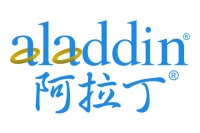Qualitative and Quantitative Analyses of Phospholipids by LCMS for Lipidomics
互联网
666
In this chapter we are going to mention about three different approaches in lipidomics and how to effectively profile or calculate the amounts of phospholipids from major molecular species up to minor ones.
| 1) |
Precise identification and profiling of individual molecular species of phospholipids by data-dependent LC–ESIMS/MS combination with “Lipid Search” . We have been using this method as a global analysis of phospholipid. We usually applied this method at least once for new biological samples. We constructed an automated search engine, “Lipid Search”, for identification and profiling of phospholipids. Once after applying this analysis, a specified retention time can be obtained for each elution peak of individual phospholipid molecular species. Thus, reproducible identification results can be effectively obtained by our search engine from the data obtained by single LC or combination of LC with specified head group survey by using precursor ion scanning or neutral loss scanning.
|
| 2) |
An effective analytical method of LC–ESIMS for the identification of acidic phospholipids such as phosphatidic acid and phosphatidylserine . This is an approach of how to obtain sharp chromatographic peaks for acidic lipids such as phosphatidic acid and phosphatidylserine that are normally detected as broad elution peaks. With this improvement very small amount of molecular species in minor acidic phospholipids were effectively obtained.
|
| 3) |
Identification and profiling of molecular species in focused phospholipids . Third one is a combination analysis of focused methods such as precursor ion scanning or neutral loss scanning and high efficient LC separation. As reported previously, different combinations of fatty acids on sn -1 and sn -2 can be mostly detected as separate peaks by reverse phase LC–ESIMS. Detection limit of precursor ion scanning or neutral loss scanning is more than ten times higher than that of the method without LC separation, because of decreased ion suppression. We will mention about application of this methods for focused analysis on phosphatidylethanolamine-plasmalogens.
|



![6-氯-2-[(2,4-二氯苯基)甲基]-1H-1,3-苯并二唑;1274937-58-4;>95%(LC-MS);V10687-1g](https://img1.dxycdn.com/p/s14/2025/1029/004/8672158669127143891.jpg!wh200)





